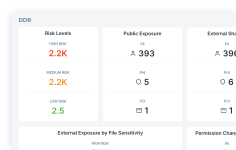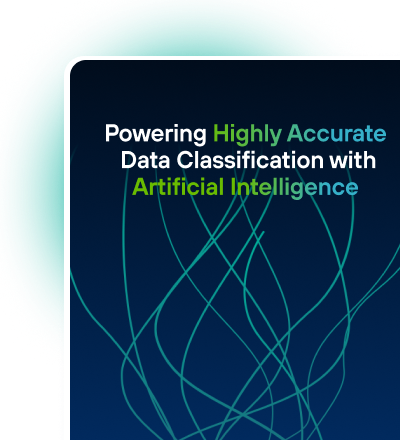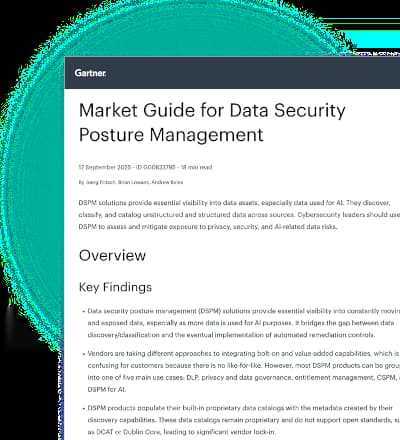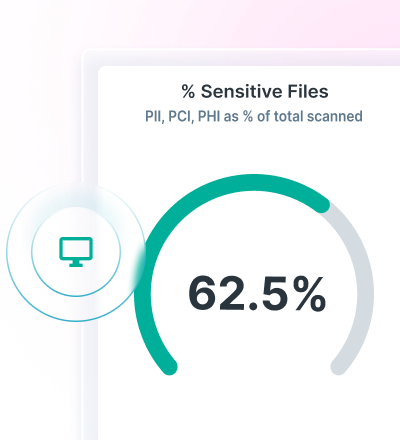Effective Data Access Governance Use Cases for Modern Enterprises
0 min read

Lionel Menchaca
Enterprises are generating and sharing more data than ever across hybrid clouds, collaboration platforms, and AI-powered workflows.
As data grows, so does risk and investment. According to some estimates, the global data governance market is projected to expand from $4.35 billion in 2024 to $12.14 billion by 2029, a compound annual growth rate (CAGR) of nearly 25%. This rapid growth highlights how essential effective governance has become for managing sensitive information at scale.
Enterprises need greater control over their data, and Data Access Governance (DAG) provides it. DAG maps where data lives, who can access it, and how it moves, enabling least-privilege enforcement and risk-based policies across environments. When combined with automated classification and compliance workflows, DAG turns reactive data management into proactive control.
Forcepoint unifies this approach through critical Data Access Governance solutions and capabilities that extend visibility and protection to cloud services and SaaS applications. Together, these technologies deliver complete insight and control over business data, closing the visibility-control gap that leaves many organizations exposed.
This post explores seven real-world data access governance use cases that show how leading enterprises protect, govern and automate control of their data while improving compliance and enabling innovation.
1. Identifying Types of Sensitive Data
Problem:
Many organizations lack visibility into where sensitive or regulated data is stored, making it difficult to apply consistent protection or comply with regulations.
Solution:
DAG enables continuous discovery and classification to identify sensitive information such as PII, PHI or payment data across structured and unstructured sources. Forcepoint Data Security Posture Management (DSPM) automatically maps data flows and applies risk context, DLP enforces protection policies, and CASB extends this visibility and control to cloud apps and collaboration tools.
Customer Story:
A global aviation leader used Forcepoint’s classification and DLP controls to gain visibility into sensitive assets and maintain compliance across multiple international regions.
Key Takeaway:
Accurate data discovery and classification provide the foundation for every effective data governance framework.
2. Automating Compliance
Problem:
Manual compliance reporting and audits are time-consuming, error-prone and difficult to scale across multiple jurisdictions.
Solution:
Data Access Governance benefits from automating compliance by continuously monitoring sensitive data, validating controls and generating audit-ready reports. Forcepoint DSPM identifies regulated data, DDR detects anomalies, DLP enforces protection policies and CASB ensures consistent controls in cloud and SaaS environments.
Customer Stories:
FBD Insurance: Implemented Forcepoint’s integrated data protection to automate compliance reporting, reduce manual audit work, and ensure that customer data remains secure and accessible only to authorized users.
VakifBank: Unified visibility across its operations using Forcepoint DLP and analytics to simplify complex regulatory reporting and maintain operational continuity.
Key Takeaway:
With DAG, compliance becomes continuous and scalable, reducing risk and ensuring readiness for evolving regulations.
3. Managing Permissions Accurately
Problem:
Excessive or unclear permissions create significant insider risk and make it difficult to enforce least-privilege access.
Solution:
DAG centralizes visibility into who can access what data, ensuring privileges are properly aligned with role and sensitivity. DSPM identifies overexposed assets, DDR detects abnormal activity and CASB extends these controls to cloud and collaboration platforms.
Customer Story:
Communisis used Forcepoint’s behavioral analytics and DLP controls to ensure that sensitive client data remained accessible only to authorized employees and approved partners.
Key Takeaway:
Accurate access governance ensures accountability and prevents privilege creep across hybrid environments.
4. Integrating Tools to Avoid Protection Gaps
Problem:
Disconnected tools create blind spots between discovery, detection and response, delaying reaction to potential data risks.
Solution:
A unified strategy integrates Data Access Governance tools such as DSPM, DDR, DLP and CASB through the Forcepoint Data Security Cloud, enabling shared intelligence and faster response. This integration helps organizations correlate data movement, access patterns and enforcement actions across endpoints, networks and cloud environments.
Customer Story:
An advanced R&D lab improved its data protection posture by integrating Forcepoint DLP, analytics and CASB, gaining full visibility into research workflows and shared environments.
Key Takeaway:
Integrated tools eliminate protection gaps and provide consistent, end-to-end visibility into data activity.
5. Reducing Risk Surface Through ROT Cleanup
Problem:
Redundant, obsolete or trivial (ROT) data increases attack surfaces and complicates compliance.
Solution:
Data Access Governance helps organizations identify stale or duplicate data and automate its cleanup or archival. DSPM discovers unused or noncompliant data sets, and DLP applies retention and disposal policies. CASB extends this same control to cloud environments to ensure no redundant data remains exposed in shared repositories.
Forcepoint highlights this capability in its Taming the Data ROT Beast, which explains how classifying and cleaning up ROT data reduces both cost and regulatory exposure by keeping only what is necessary and defensible.
Key Takeaway:
Reducing data clutter strengthens governance accuracy and minimizes the attack surface across on-premises and cloud environments.
6. Tracking Historical Data Usage and Lineage
Problem:
Without visibility into how data moves or changes over time, organizations struggle to trace incidents and demonstrate compliance.
Solution:
DAG maintains continuous data lineage and usage visibility within popular apps like SharePoint. DDR captures behavioral patterns and file history, while DSPM records ownership, modification, and access context. CASB extends this insight to data shared through cloud and SaaS platforms, helping teams trace exactly where and how data has been accessed or modified.
Forcepoint DDR plays a key role here, providing continuous monitoring that reveals how files are used, moved and shared over time. This capability helps organizations reconstruct events, satisfy audit requirements and accelerate incident investigations as well.
Key Takeaway:
Data lineage transforms governance from static documentation into a living, auditable history of how sensitive information is used and protected.
7. Prioritizing Risk Management Through Advanced Reporting
Problem:
Security and compliance data often exist in separate systems, making it difficult to measure risk holistically.
Solution:
Forcepoint consolidates data from DSPM, DDR, DLP and CASB into unified dashboards within the Forcepoint Data Security Cloud. These insights help teams prioritize remediation based on actual exposure and regulatory impact.
Key Takeaway:
Unified reporting connects governance metrics directly to business risk, helping leaders make informed decisions.
Frequently Asked Questions
- Where is data governance used?
In every environment where business data is created, stored, or shared, including on-premises systems, cloud services, and collaboration platforms. - What is an example of a data governance framework?
A Data Access Governance framework that integrates DSPM for discovery, DDR for monitoring, DLP for enforcement, and CASB for cloud control under a unified policy model. - How to implement data governance?
Begin with data discovery and classification, then automate access controls and integrate real-time monitoring using a unified DAG platform like Forcepoint. - How does DAG support compliance and audit readiness?
DAG automates monitoring, reporting and policy enforcement so organizations can maintain continuous compliance and be audit-ready at any time. - How can Forcepoint help with structured, unstructured and cloud data governance?
Forcepoint combines DSPM and CASB to discover, classify and protect both structured and unstructured data, along with cloud data wherever it resides. - How does DAG fit into a Zero Trust strategy?
DAG enforces least privilege and continuously verifies data access, supporting the Zero Trust principle “never trust, always verify.”
Conclusion
DAG is essential for organizations that need to control risk while enabling innovation. Forcepoint’s integrated solution, anchored by DSPM, DDR and DLP and strengthened by CASB, provides complete visibility and control over data across endpoints, cloud services and collaboration tools.
By unifying discovery, detection and enforcement, organizations can automate compliance, enforce least privilege, and respond to threats in real time. Learn more about Forcepoint’s approach to Data Access Governance.

Lionel Menchaca
Read more articles by Lionel MenchacaAs the Content Marketing and Technical Writing Specialist, Lionel leads Forcepoint's blogging efforts. He's responsible for the company's global editorial strategy and is part of a core team responsible for content strategy and execution on behalf of the company.
Before Forcepoint, Lionel founded and ran Dell's blogging and social media efforts for seven years. He has a degree from the University of Texas at Austin in Archaeological Studies.
X-Labs
Get insight, analysis & news straight to your inbox

To the Point
Cybersecurity
A Podcast covering latest trends and topics in the world of cybersecurity
Listen Now










